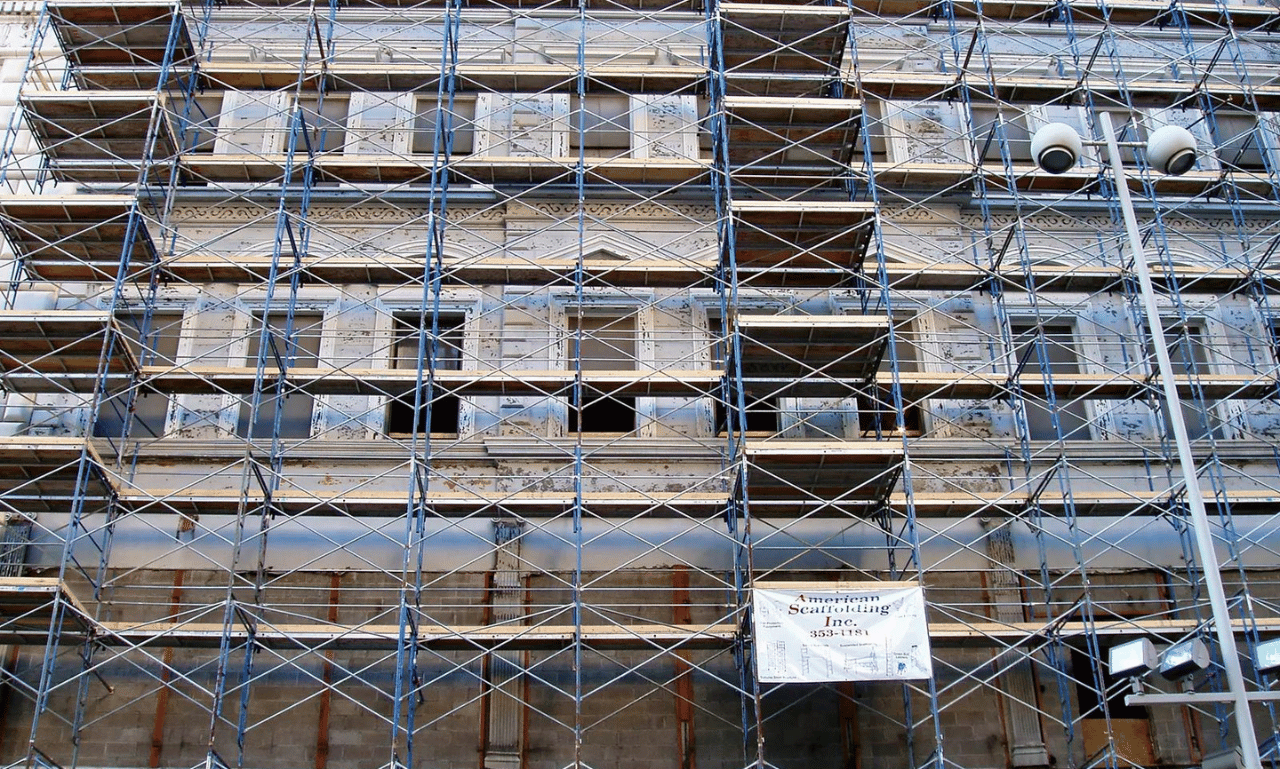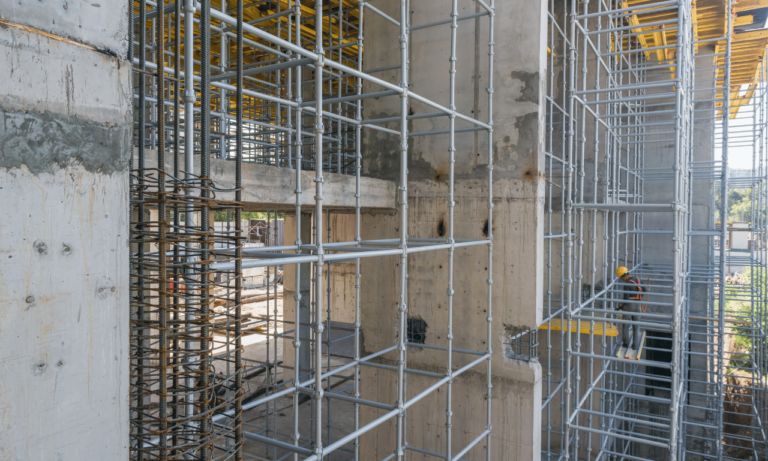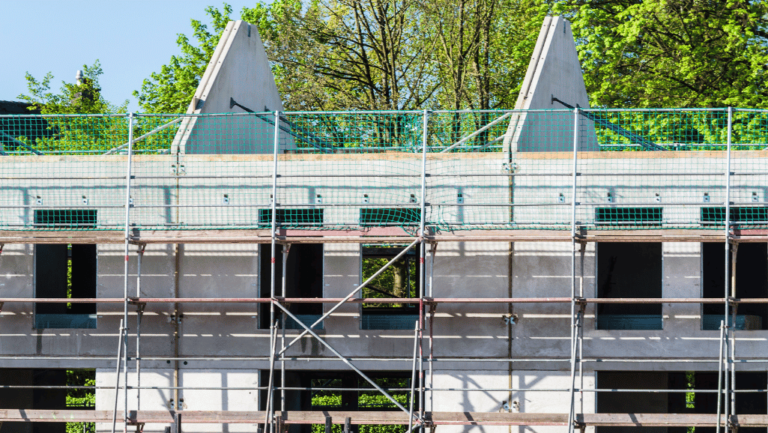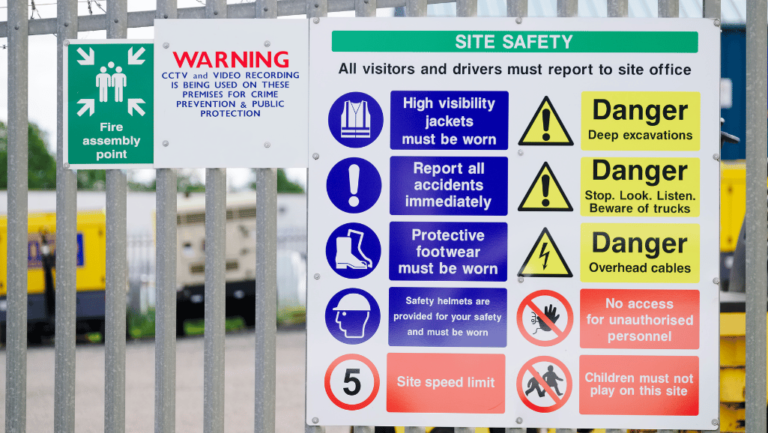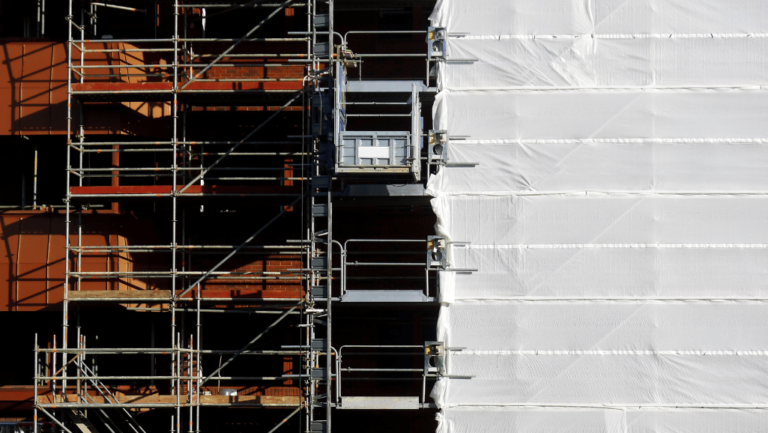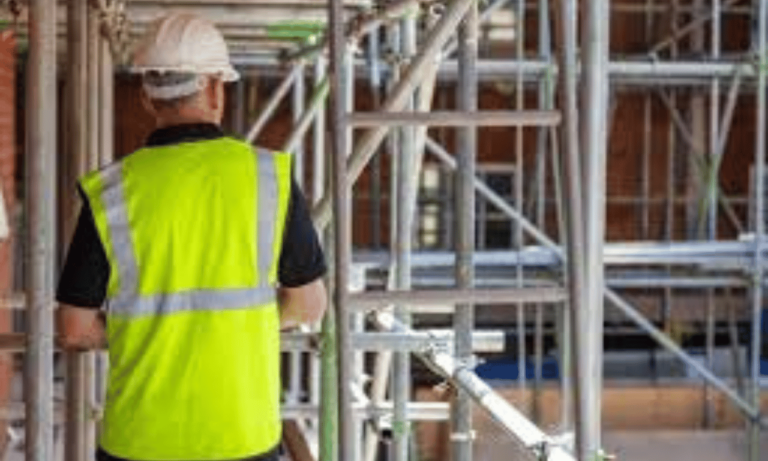Phone:
(+65)8319-0742
Welcome to our comprehensive guide to scaffolding pictures in the construction industry. In this article, we will explore the importance of visual resources for professionals, providing valuable insights into construction, design, and safety. By leveraging the power of scaffolding pictures, you can gain inspiration and knowledge to enhance your projects and ensure the highest standards of safety.
Key Takeaways
- Scaffolding pictures play a crucial role in the construction industry, offering inspiration and knowledge.
- Visual resources provide valuable insights into construction, design, and safety practices.
- By incorporating scaffolding pictures into your projects, you can enhance creativity and ensure safety standards.
- Stay informed about the latest trends and innovations in scaffolding through visual guides and galleries.
- Continuously evolve your skills and techniques by exploring the diverse range of scaffolding pictures available.
Understanding Scaffolding: A Brief Overview
In the construction industry, afbeeldingen and scaffolding play a vital role in providing a safe and efficient working environment for workers at elevated heights. To grasp the significance of scaffolding, it’s essential to have a fundamental understanding of its purpose, various types, and common components.
Scaffolding Images: To enhance your understanding, let’s take a visual journey through different design ideas and construction scenarios that showcase the versatility and practicality of scaffolding.
The Purpose of Scaffolding
Scaffolding is primarily used to provide temporary platforms and support structures during construction, maintenance, repair, or renovation projects. It serves as a sturdy framework that enables workers to access difficult-to-reach areas, work safely at elevated heights, and transport materials.
Types of Scaffolding
There are various types of scaffolding, each designed to suit specific project requirements and conditions. Some common types include:
- Supported Scaffolding
- Suspended Scaffolding
- Mast Climbing Scaffolding
- Mobile Scaffolding
Each type has its unique features and advantages, catering to different project needs and environments.
Common Components of Scaffolding
Scaffolding consists of several crucial components that work together to provide a stable and secure structure. Some common components include:
- Standards
- Transoms
- Ledgers
- Braces
- Platforms
- Toe Boards
Understanding the purpose and function of these components is vital for proper scaffold assembly and ensuring worker safety.
Take a look at the following examples of scaffolding images, which demonstrate different scaffold design ideas and construction scaffolding photos:
Scaffolding Design Inspirations: Pictures for Creative Ideas
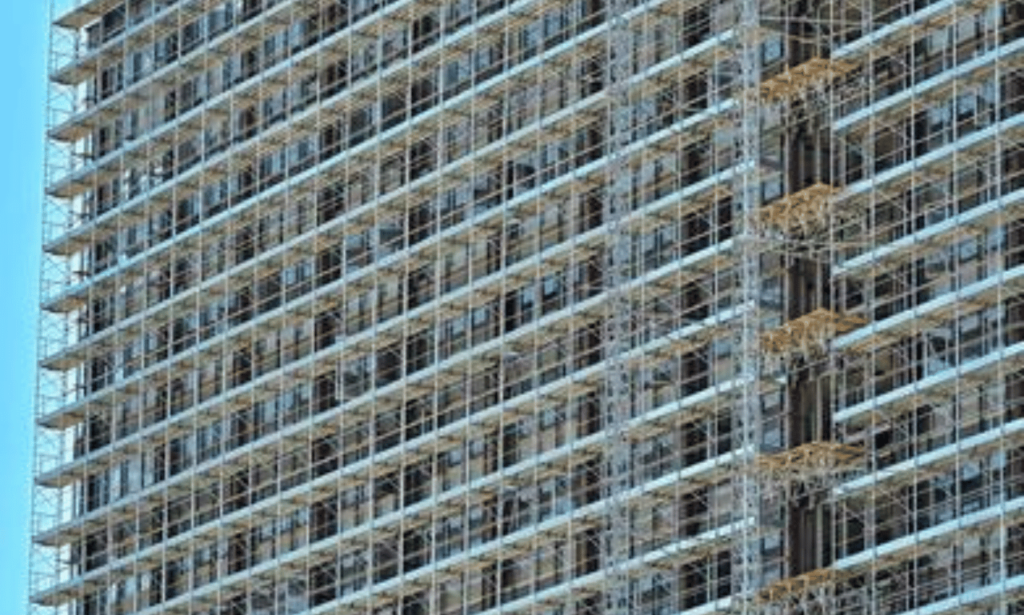
When it comes to scaffolding projects, professionals are constantly on the lookout for new and innovative design ideas. Whether it’s creating visually stunning structures or ensuring maximum efficiency, having a repertoire of scaffold design inspirations can make a significant difference. In this section, we present a collection of building scaffolding pictures that showcase unique and creative concepts to inspire your next project.
Bringing together form and function, these scaffolding images highlight the ingenuity of designers and builders who push boundaries to create eye-catching structures. From intricate geometric patterns to striking color combinations, these scaffold design ideas demonstrate how scaffolding can be transformed into an architectural masterpiece.
One of the key advantages of using scaffolding images for creative inspiration is their ability to provide visual context. Rather than relying solely on traditional blueprints and technical drawings, professionals can now visualize their ideas in a more tangible way. These building scaffolding pictures serve as a catalyst for brainstorming sessions, encouraging designers and engineers to think outside the box and explore unconventional solutions.
Moreover, incorporating unique design elements into your scaffolding projects not only adds aesthetic value but also creates a lasting impression. Whether you’re working on a renovation project or constructing a brand-new structure, scaffolding design inspirations can help you deliver a visually striking and memorable result.
By incorporating different scaffold design ideas into your projects, you also have the opportunity to stand out in a highly competitive industry. With clients seeking distinctive solutions that go beyond functionality, showcasing your creativity through these scaffolding images can give you a competitive edge.
Whether you’re a seasoned professional or just starting your career in the construction industry, these scaffolding design inspirations are sure to ignite your imagination and provide you with a wealth of ideas for your next project.
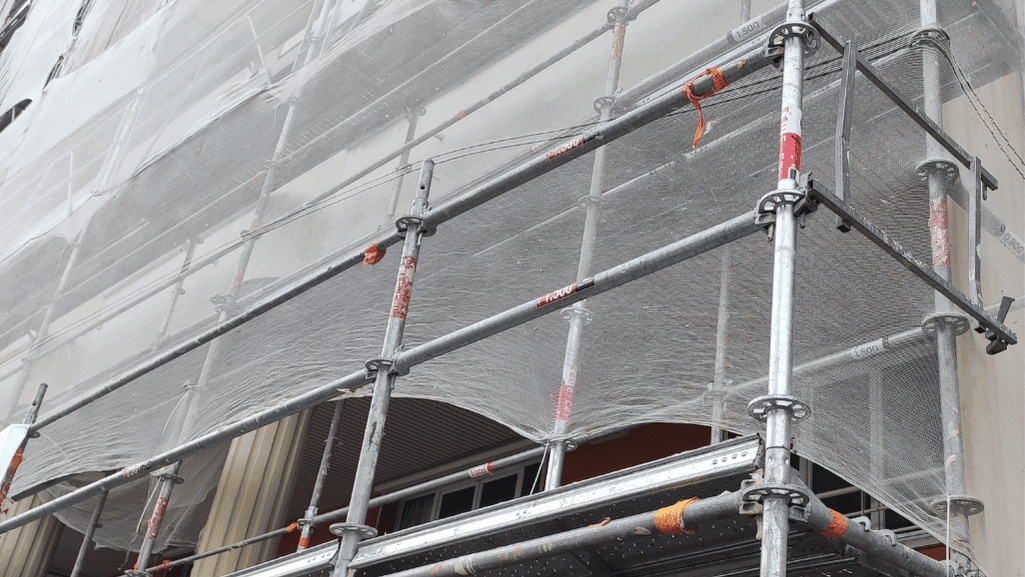
Scaffolding
There are several types of scaffolding, each designed for specific applications and industries. Some common types include:
Mobile Scaffolding: This portable, wheeled scaffold can be easily moved around a work site, making it ideal for tasks that require frequent repositioning.
Fixed Scaffolding: Attached permanently to a building or structure, fixed scaffolding provides a stable and secure platform for long-term projects.
Suspended Scaffolding: Suspended from a building or structure using ropes or chains, this type of scaffold is perfect for tasks that require access to high, hard-to-reach areas.
Aerial Scaffolding: Mounted on a vehicle or trailer, aerial scaffolding offers mobility and access to elevated work areas, making it suitable for tasks like window cleaning or exterior painting.
Understanding the specific advantages and applications of each type of scaffolding can help you choose the right solution for your project needs.
Scaffolding Components and Safety
Scaffolding consists of several crucial components, including frames, cross braces, coupling pins, and spring clips. Ensuring that all components are made from high-quality materials, such as steel, is essential for maintaining the integrity and safety of the scaffold. Proper assembly and maintenance are equally important to prevent accidents and ensure a stable working platform.
Safety features, such as guardrails and toe boards, should be installed to prevent falls and injuries. Regular inspections and maintenance checks are vital to ensure that the scaffolding remains safe and secure throughout its use. By adhering to these safety measures, you can create a safer work environment and minimize the risk of accidents.
Scaffolding Applications and Uses
Scaffolding is used in a wide range of applications, including:
Construction: Scaffolding supports workers during building construction, renovation, and repair, providing access to high and difficult-to-reach areas.
Maintenance: It is used to access elevated areas for maintenance and repair work, ensuring that tasks can be performed safely and efficiently.
Oil and Gas: In the oil and gas industry, scaffolding is essential for drilling, maintenance, and repair work, providing stable platforms in challenging environments.
Manufacturing: Scaffolding is used in manufacturing facilities for maintenance, repair, and production work, allowing workers to access machinery and equipment safely.
These diverse applications highlight the versatility and critical role of scaffolding in various industries, ensuring that tasks are completed safely and effectively.
Scaffolding Planning and Selection
When planning and selecting scaffolding, it’s essential to consider several factors to ensure the right choice for your project:
Work Site Conditions: The type of scaffolding used should be suitable for the work site conditions, including terrain, weather, and accessibility.
Work Height: The scaffolding should be designed to reach the required work height safely and efficiently, providing a stable platform for workers.
Load Capacity: Ensure that the scaffolding can support the weight of workers, materials, and equipment, preventing overloading and potential accidents.
Budget: Consider the cost of scaffolding, including purchase or rental costs, maintenance, and inspection expenses, to ensure it fits within your project budget.
By carefully evaluating these factors, you can select the most appropriate scaffolding for your needs, ensuring a safe and efficient work environment.
Construction Scaffolding: Photos for Practical Insights

In the construction industry, scaffolding plays a vital role in providing stability and access for workers at elevated heights. To gain a better understanding of how scaffolding is used in real construction scenarios, including various scaffold platforms and configurations, professionals can rely on the power of visual resources. This section presents a collection of construction scaffolding photos that offer practical insights into the industry.
By viewing these compelling scaffold platform images, professionals can observe the different types of scaffolding systems employed in construction projects. Through a combination of detailed photographs and informative descriptions, readers can examine the various scaffolding configurations, such as frame scaffolding, tube and coupler scaffolding, and system scaffolding.
Visualizing Safe and Efficient Scaffold Usage
The construction scaffolding photos showcased in this section highlight the proper and effective usage of scaffolding to ensure safety and efficiency on job sites. Professionals can analyze these images to understand the correct assembly, positioning, and bracing of scaffolding components. By observing the use of guardrails, toe boards, and personal protective equipment, readers can gain insights into best practices that promote a secure work environment.
Furthermore, the photos illustrate the versatility of scaffolding systems in accommodating different construction tasks. Whether it’s providing access to high-rise buildings, facilitating exterior renovations, or supporting heavy loads during construction, scaffolding proves to be a reliable and flexible solution.
Through the practical insights provided by these construction scaffolding photos, professionals can gather inspiration, improve their knowledge base, and enhance their project planning and execution. The visuals serve as a valuable tool for architects, engineers, construction managers, and workers alike, enabling them to make informed decisions and ensure the successful completion of construction projects.
With a comprehensive visual guide like this, professionals can confidently navigate the challenges of construction scaffolding and leverage its benefits in their projects. The visuals presented in this section offer a glimpse into the world of construction scaffolding and inspire professionals to push boundaries and explore innovative solutions.
Scaffolding Safety: Visuals for Best Practices
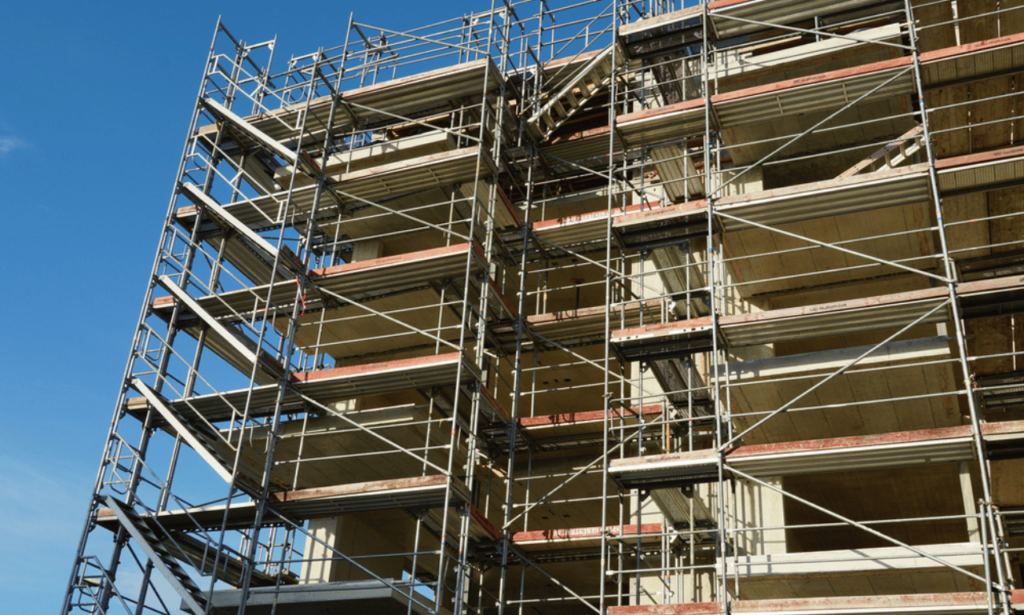
When it comes to construction, safety should always be a top priority. Proper training, knowledge of best practices, and the use of appropriate safety equipment are crucial for creating a safe working environment. In this section, we will explore scaffold safety visuals to help professionals understand and implement essential safety measures.
Visual resources, such as scaffolding pictures, play a valuable role in promoting safety awareness by providing real-life examples of safe practices and potential hazards. These visuals serve as powerful tools to educate workers, supervisors, and project managers about the importance of adhering to safety protocols.
By visually demonstrating the correct use of safety equipment, such as harnesses, hard hats, and fall protection systems, scaffold safety visuals effectively communicate the necessary precautions to mitigate the risk of accidents and injuries. Seeing these safety measures in action provides a clear understanding of their implementation and highlights their importance in preventing potentially life-threatening incidents on construction sites.
In addition to showcasing safety equipment, scaffolding pictures can also illustrate best practices, such as proper scaffold assembly, secure anchoring, and regular inspections. These visuals help professionals develop a comprehensive understanding of the steps involved in creating a safe and stable scaffold structure.
Whether it’s highlighting potential dangers, demonstrating safety procedures, or showcasing recommended safety equipment, scaffold safety visuals are an invaluable resource for fostering a safety-conscious mindset in the construction industry.
Importance of Scaffold Safety Visuals:
- Enhance safety awareness among workers and supervisors
- Illustrate the correct use of safety equipment
- Showcase best practices in scaffold assembly and maintenance
- Promote a safety-conscious mindset on construction sites
Remember, a picture is worth a thousand words. Utilizing scaffold safety visuals ensures that important safety information is easily understood and retained, reducing the risk of accidents and creating a safer work environment for everyone involved.
Next, we will explore case studies of successful scaffold implementation, which provide valuable insights into practical applications and potential challenges. These scaffolding images capture real-life scenarios, offering inspiration for professionals in the construction industry.
| Scaffold Safety Precautions | Safety Equipment |
|---|---|
| Proper scaffold assembly | Harnesses |
| Secure scaffold anchoring | Hard hats |
| Regular scaffold inspections | Fall protection systems |
Case Studies: Successful Scaffold Implementation

Within the construction industry, successful scaffold implementation is a key factor in ensuring efficient and safe project execution. In this section, we present a series of case studies that highlight real-world examples of effective scaffold design and utilization. By examining these case studies and accompanying scaffolding images and construction scaffolding photos, readers will gain valuable insights into the practical applications and potential challenges faced by industry professionals.
Case Study 1: Urban High-rise Construction
In our first case study, we explore the construction of a sleek and modern urban high-rise. By employing a comprehensive scaffold system, the construction team successfully navigated the challenges associated with tall structures. The construction scaffolding photos reveal the strategic placement of scaffolding at various levels, ensuring the safety of workers during the construction process.
Case Study 2: Historic Building Restoration
Preserving the architectural heritage of historic buildings often requires delicate scaffold implementation. In this case study, we delve into the restoration project of a renowned historical landmark. Through carefully designed scaffolding configurations, the scaffolding images demonstrate how the preservation team accessed intricate details of the structure, allowing for meticulous restoration work.
Case Study 3: Bridge Construction
Bridge construction presents unique challenges that demand robust scaffold solutions. In this case study, we explore the construction of a large-scale bridge project. The accompanying construction scaffolding photos showcase the intricate network of scaffolding, enabling workers to access different parts of the bridge and facilitate seamless construction.
Case Study 4: Industrial Plant Expansion
Industrial plant expansions require scaffolding systems that can accommodate heavy machinery and ensure worker safety. Through our fourth case study, we analyze a successful plant expansion project. The scaffolding images portray the scaffolding’s integration with the existing structures, allowing for uninterrupted plant operations while expansion work was carried out.
Case Study 5: Complex Infrastructure Project
Large-scale infrastructure projects often involve multifaceted scaffold systems. In this final case study, we examine the implementation of scaffolding for a complex infrastructure project. The construction scaffolding photos reveal the integration of scaffold structures with various elements, such as tunnels, pillars, and elevated platforms, demonstrating the versatility and adaptability of scaffold design.
Through these case studies, it becomes evident that successful scaffold implementation requires meticulous planning, innovative design, and strict adherence to safety protocols. Drawing upon the expertise showcased in these examples, professionals in the construction industry can gain valuable insights for their own scaffold projects.
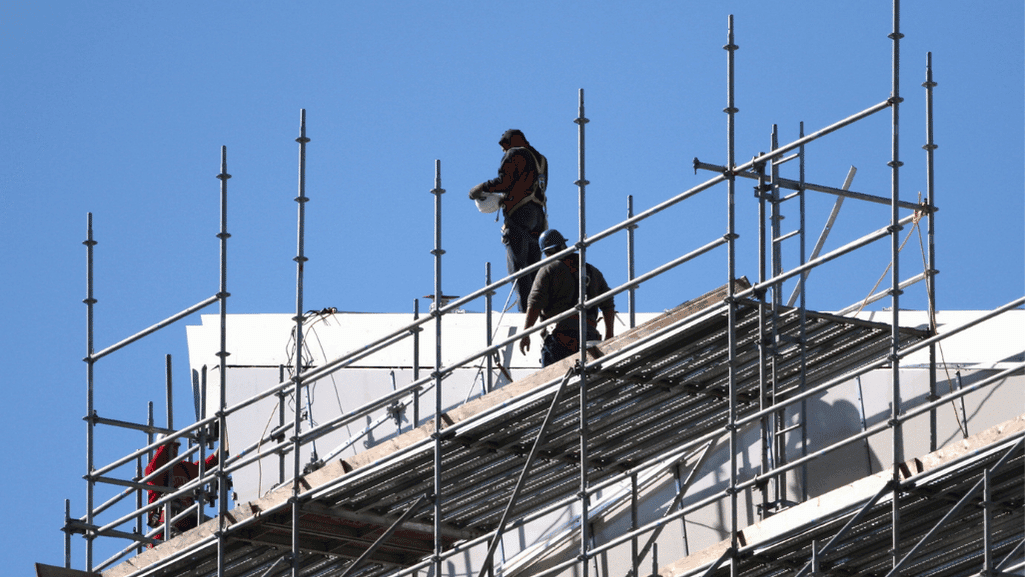
| Case Study | Project Type | Key Features |
|---|---|---|
| Urban High-rise Construction | High-rise building | Strategic scaffold placement at multiple levels |
| Historic Building Restoration | Historical landmark | Delicate scaffold configurations for intricate access |
| Bridge Construction | Bridge | Complex scaffold network for seamless construction |
| Industrial Plant Expansion | Industrial plant | Integration of scaffolding with existing structures |
| Complex Infrastructure Project | Infrastructure project | Versatile scaffold design for various elements |
Trends and Innovations: Scaffolding in the Modern Age
In today’s rapidly evolving construction industry, staying up-to-date with the latest trends and innovations is crucial for professionals seeking to push the boundaries of scaffold design and functionality. This section delves into exciting new developments, providing scaffold design ideas, building scaffolding pictures, and scaffold platform images that showcase the cutting-edge techniques shaping the scaffolding landscape.
New Materials and Lightweight Designs
One noteworthy trend in modern scaffold design is the utilization of new materials and lightweight structures. Traditional steel scaffolding is being complemented and, in some cases, replaced by advanced materials such as carbon fiber-reinforced polymer (CFRP) and aluminum, which offer enhanced strength, durability, and reduced weight. This shift not only allows for easier assembly and transport but also increases worker safety and efficiency.
Modular and Prefabricated Systems
Modular and prefabricated scaffold systems are gaining popularity due to their versatility and convenience. These systems consist of pre-designed components that can be quickly assembled and adjusted according to specific project requirements. Scaffold design ideas for modular systems showcase their adaptability to various building structures and geometries, facilitating efficient construction processes and reducing overall project timelines.
Advanced Safety Features
The integration of advanced safety features is revolutionizing the scaffolding industry, putting worker well-being at the forefront. Building scaffolding pictures and scaffold platform images highlight the implementation of guardrails, anti-slip surfaces, and fall arrest systems that provide increased protection against accidents and falls. By adopting these futuristic safety measures, project managers and contractors can mitigate risks and create safer working environments for their teams.
Smart Technology Integration
As technology continues to transform the construction landscape, scaffold design is also being influenced by innovative digital solutions. Building information modeling (BIM) software is being utilized to create virtual representations of scaffolding structures, enabling better planning, visualization, and coordination. This digitalization streamlines the design and construction processes and allows for efficient communication and collaboration among project stakeholders.
Eco-Friendly Practices
In response to environmental concerns, the scaffolding industry is embracing eco-friendly practices that prioritize sustainability. Scaffold design ideas now incorporate elements such as renewable materials, energy-efficient solutions, and waste reduction strategies. These environmentally conscious approaches not only minimize the ecological impact of construction projects but also contribute to positive public perception and compliance with green building certifications.
| Trend | Description |
|---|---|
| New Materials and Lightweight Designs | Utilization of advanced materials and lightweight structures to enhance scaffold strength, durability, and worker safety. |
| Modular and Prefabricated Systems | Quick assembly and adjustment of scaffold systems using pre-designed components for versatile and efficient construction. |
| Advanced Safety Features | Integration of guardrails, anti-slip surfaces, and fall arrest systems for enhanced worker protection. |
| Smart Technology Integration | Utilization of digital tools such as BIM software for planning, visualization, and coordination of scaffold structures. |
| Eco-Friendly Practices | Adoption of sustainable materials, energy-efficient solutions, and waste reduction strategies for environmentally conscious construction. |
Conclusion
In conclusion, the use of scaffolding pictures in the construction industry proves to be invaluable for professionals in various aspects of their work. From design inspiration to practical insights and safety best practices, these visual resources offer a wealth of information and inspiration.
By exploring the visual guide and gallery presented in this article, professionals can continue to expand their knowledge and seek ongoing inspiration for their scaffolding projects. The diverse collection of scaffold design ideas, construction scaffolding photos, and scaffold platform images provides a comprehensive understanding of the field.
Remember, staying informed about the latest trends and innovations is vital to remain competitive in the modern age. By regularly exploring new developments in scaffolding, professionals can continue to push boundaries and reach new heights of creativity and efficiency.
FAQ
What is the purpose of including scaffolding pictures in this article?
Scaffolding pictures serve as visual resources to provide inspiration and knowledge in construction, design, and safety. They help professionals visualize different scaffolding scenarios and gain practical insights into their projects.
Why are scaffold design ideas important?
Scaffold design ideas are crucial because they help professionals create innovative and unique scaffolding structures. By exploring different design concepts, professionals can enhance the functionality, efficiency, and aesthetics of their scaffolding projects.
How can construction scaffolding photos be valuable?
Construction scaffolding photos offer practical insights into how scaffolding is used in real construction scenarios. Professionals can gain a better understanding of various scaffold platforms, configurations, and applications by studying these photos.
Why are scaffold safety visuals essential?
Scaffold safety visuals are crucial for promoting best practices and ensuring the well-being of workers. By showcasing proper safety equipment, precautions, and procedures, these visuals help professionals prioritize safety in their scaffolding projects.
What can professionals learn from case studies of successful scaffold implementation?
Case studies of successful scaffold implementation provide valuable insights into practical applications and potential challenges. By examining these studies, professionals can learn from others’ experiences and improve their own scaffold projects.
How can scaffold platform images help in understanding modern trends and innovations?
Scaffold platform images showcase the latest trends and innovations in scaffolding. By exploring these images, professionals can discover new design ideas, building techniques, and technological advancements that are shaping the scaffolding industry.

